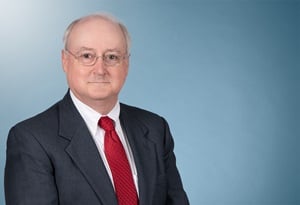Supreme Court Decides Los Angeles County Flood Control District v. Natural Resources Defense Council, Inc.
On January 8, 2013, the Supreme Court of the United States decided Los Angeles County Flood Control District v. Natural Resources Defense Council, Inc., No. 11-460, holding that the flow of water out of a concrete channel within a river does not qualify as a "discharge of a pollutant" under the Clean Water Act.
The Los Angeles County Flood Control District (the District) operates a storm sewer drainage system that collects, transports, and discharges storm water. Because the storm water is often heavily polluted, the Clean Water Act (CWA) required the District to obtain a National Pollutant Discharge Elimination System (NPDES) permit before discharging storm water into navigable waters. When data from nearby monitoring stations showed that water quality standards had been exceeded for a number of pollutants in violation of the District's NPDES permit, the Natural Resources Defense Council (NRDC) filed a citizen suit against the District under the Clean Water Act. The District Court granted summary judgment to the District in part because the record did not sufficiently show that the District's storm-water system had "discharged" storm water containing the standards-exceeding pollutants. The Ninth Circuit reversed, holding that a discharge of pollutants had occurred under the CWA when polluted water "flowed out of the concrete channels" and entered downstream portions of waterways lacking concrete linings.
The Supreme Court reversed, holding that when polluted water flows from one portion of a river that is navigable water of the United States, through a concrete or other engineered improvement in the river and then into a lower portion of the same river without any concrete lining, there is no "discharge of pollutants" within the meaning of the Clean Water Act. This conclusion flowed both from the text of the CWA—which defines "discharge of a pollutant" to mean the "addition" of any pollutant to navigable waters from any source—as well as applicable Supreme Court precedent, which held that discharges occur under the CWA only if water is transferred between "meaningfully distinct water bodies." Using a colorful analogy, the Supreme Court explained: "[I]f one takes a ladle of soup from a pot, lifts it above the pot, and pours it back into the pot, one has not ‘added' soup or anything else to the pot."
Justice Ginsburg delivered the opinion for a unanimous Court, with the exception of Justice Alito, who concurred in the judgment without opinion.



